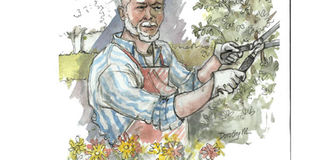The killer of the missing gay men

What you need to know:
Community fears. McArthur could have been caught sooner had the residents of the gay community been more forthcoming. The police acknowledged that they knew people were missing but they did not have the right answers as nobody was coming to them.
On January 29, 2019, Thomas Donald Bruce McArthur, a 67-year-old self-employed landscaper, pleaded guilty to all eight counts of first degree murder in the Ontario Superior Court and was subsequently given eight concurrent life sentences and will not be eligible for parole until he is 91 years old. He, as a result of his actions, has been branded a serial killer who preyed on the Toronto gay community for nearly a decade.
Although McArthur pleaded guilty to the murder of eight missing gay men, to the judge, there was no evidence of remorse in him and he would have kept killing if he had not been apprehended by the police. The judge acknowledged the devastating loss suffered by friends and families in these words: “This court cannot give them what they want most: to have their loved ones back”.
The judge also described McArthur’s behaviour as pure evil and the prosecution submitted that the term “serial killer” was woefully inadequate to describe McArthur’s moral blameworthiness and the heinousness of the offences. McArthur’s attorney agreed that his crimes warranted the most serious consequences.
The arrest
McArthur was arrested on January 18, 2018. He was initially accused of killing six men and burying their remains in large flower planters at the home of a client where he stored tools for his landscaping business. More remains were later found in a valley close by. He strangled and dismembered his victims and staged photos of some of them after they died, posing their corpses in a fur coat and placing cigars in their mouths.
McArthur, a jolly looking father of two, had left his wife in the 1990s and moved from Oshwa in Ontario to Toronto. He was known as a friendly gardener. In the 1980s, he was very active in his church, perhaps keeping himself busy to avoid examining his homosexual feelings. His first job was a sales assistant but he later worked as a travelling salesman and a merchandising assistant. He began having sexual affairs with men in the early 1990s.
McArthur could have been caught sooner had the residents of the gay community been more forthcoming. The police acknowledged that they knew people were missing but they did not have the right answers as nobody was coming to them (the police), with any useful information. Indeed it was believed that families of some of the missing immigrant men failed to report their disappearance.
Shortly after McArthur’s arrest, the Mayor of Toronto acknowledged that the police had failed to react appropriately to the multiple disappearances. There was apparently a gross mishandling of missing person reports. The police did not make matters any better due to their relationship with the gay community; the police were perceived to have a hostile attitude to the gay community on more than one occasion. The police constantly harassed the gay community. It was on this marginalised group that McArthur preyed.
The police, media and the public, were also less inclined to pay attention on crimes that were perpetrated on marginalised communities. Isolation, combined with fear of the police by members of the gay immigrant community, made them more vulnerable. In this particular case, the police apparently only took the investigations seriously when Andrew Kinsman, one of the two White victims, was reported missing.
Case of racism
There was also apparent racism within the gay community. A massive local search was mounted after the disappearance of Kinsman compared to the slower and less cohesive response to the disappearance of the brown-skinned victims.
Police may never unearth the full extent of McArthur’s alleged carnage but key could be in trying to understand the man himself. Investigators have tried to understand the complicated procedures that McArthur used in the disposal of his victims’ remains and how he was able to fit the body parts in the large flower pots.
Some of the investigators think McArthur took advantage of his job as a landscaper, which involved the use of equipment such as chainsaws and wood chippers, to dispose of the bodies without attracting undue attention.
One psychologist believed that McArthur was probably in perpetual search for the next kill that would top the last one. Serial killers become overwhelmed by the fantasy of killing, constantly studying the craft of killing and a serial killer would get a small thrill every time he revisited the remains of the people he killed.
The police believe killing requires practice and serial killers are seldom perfect in the beginning and they get caught when they get sloppy.




